|
Bastogne, Belgium
Battleground, IN
Book Depository, Dallas, TX
Cape Canaveral Air
Station, FL
Fallen Timbers, OH Harpers
Ferry, WV Jean
Lafitte's Blacksmith Shop, LA
Jesse Owens Memorial, AL
LBJ
Ranch, TX
Luxembourg American Cemetery
Normandy, France
Oklahoma City National Memorial, OK
Wendover Air Field, UT
Wilbur Wright Birthplace, IN
Historic Site
Cape Canaveral Air Station,
Cape Canaveral, FL - July 18, 2012
Cape Canaveral Air Station began in 1949 as
the east coast test facility for military rockets and missiles and was
the launch site for many historic American missile launches and test
programs. These included but were not limited to Explorer, Snark, Polaris, Mercury, Gemini and several
Apollo launches before the Apollo program transferred to the NASA
Kennedy Space Center
on nearby Merritt Island. While the NASA site is a high profile
government sponsored tourist destination the Cape Canaveral Air Station
is the real deal and a must see for anyone interested or remembering the
early space program. Early historic launches were made in the 1950s and 1960s
from here that later allowed NASA put the Space Shuttles into orbit.
The Air Station, while being under control of the US Air Force, also was
and still is being used by both the US Army and US Navy to test out new rockets and
missiles. New to use the launch areas at the Air Station are the
new privately owned space launch companies, one of which has offices
next door to the visitor center where the tour starts . Free public tours
(NASA tours are not free) offered of the Air Station provided by the
Air Force Space and Missile Museum just opened to the public in early
2012, and for the space enthusiast or someone just interested in the
early US space program, this is a must tour to take.
The tour itself takes 3.5
hours and covers most of the old launch sites including where Alan
Sheppard took off from for the first US manned space flight to the tragic location where Apollo 1 crew Gus
Grissom, Ed White and Roger B. Chaffee were killed. The tour
begins at the visitor center just outside the main gate to the Air
Station and makes many stops, including the one below I have featured,
Complex 26 where Explorer One, America's first satellite into space, was
launched on January 31, 1958.
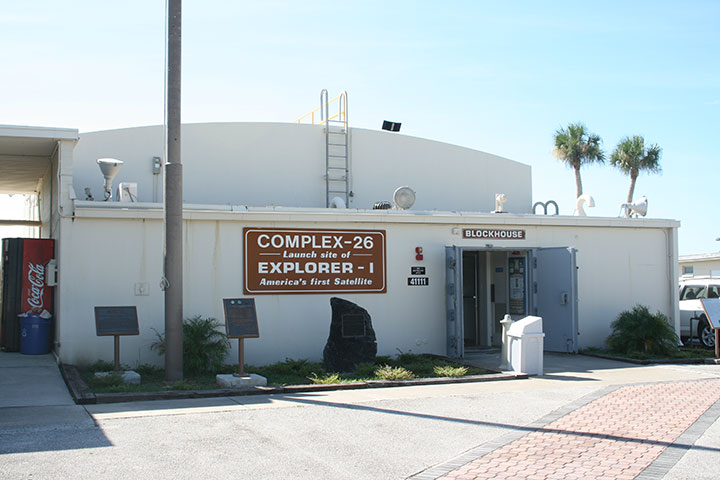
The Blockhouse for Complex 26 and the launch center of Explorer 1.
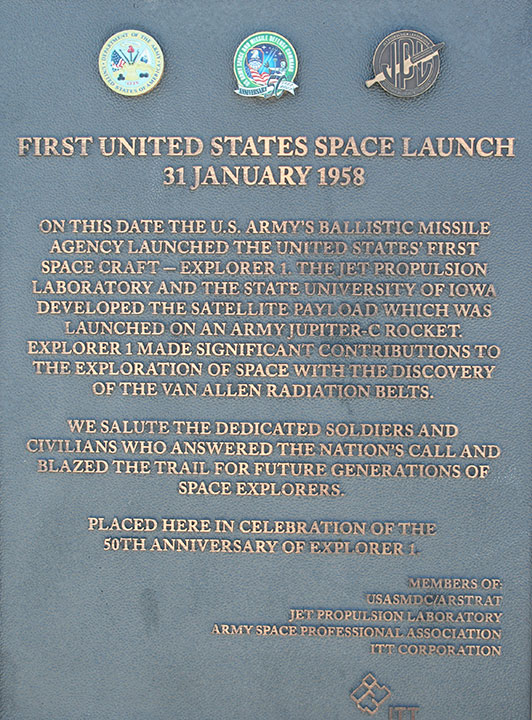
Note that while this is an Air Force installation the first US satellite
into space and the Jupiter rocket that put it there was provided by the
US Army. This is because after WWII all three services had their
own rocket and missile programs and the US Army had the most powerful
rocket at the time.
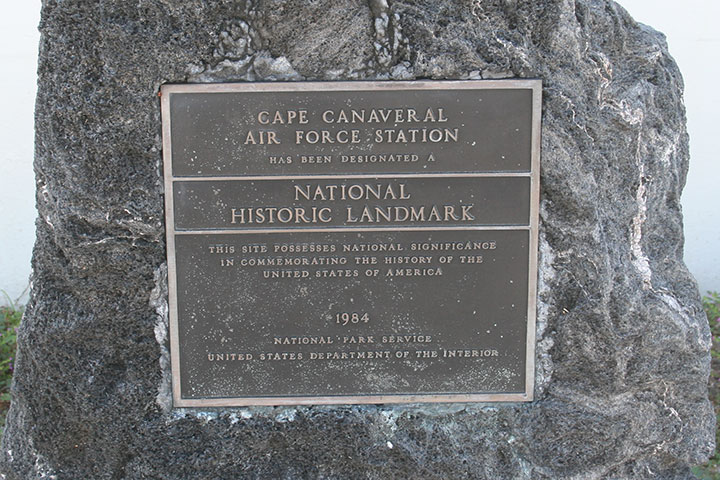
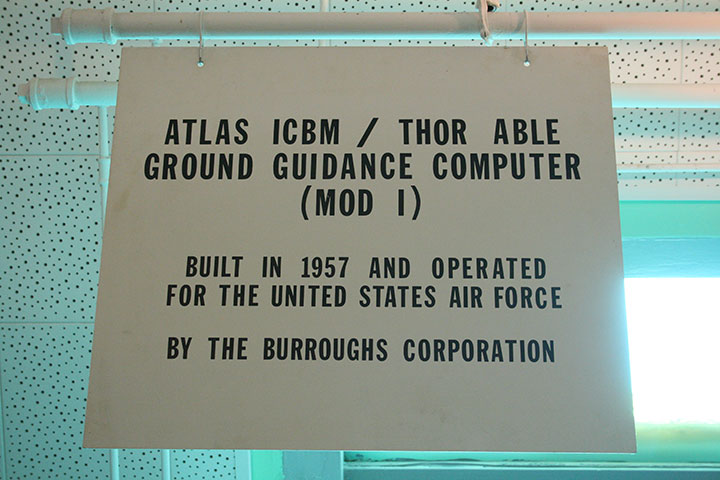
Inside the blockhouse. Burroughs was one of many companies in the
1950's and 1960's that produced main frame computers. This
particular unit was a 6400 byte machine and is an excellent example of
state of the art technology at the time.
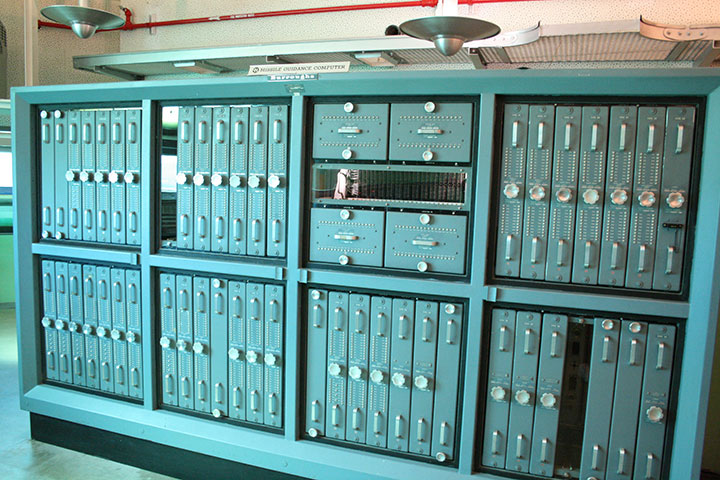
This is the main processing unit for the Burroughs Missile Guidance
Computer which takes up entire wall inside the blockhouse.
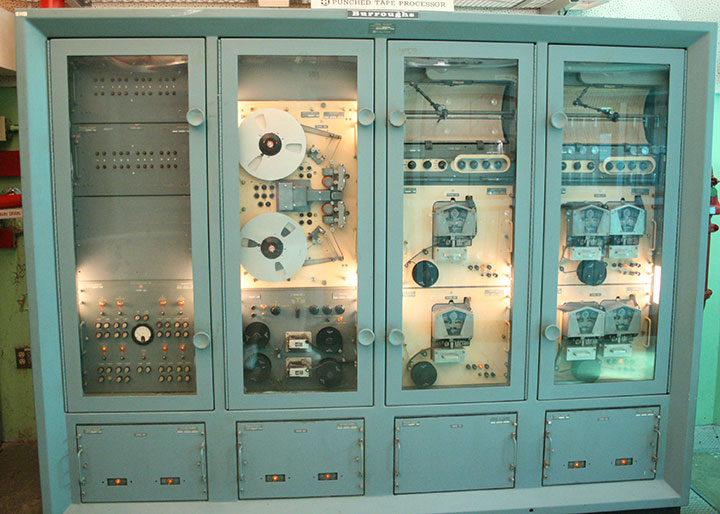
Back in the computer dark ages there was punched paper tape for both
inputting the program and printing out data. That took place on a
punched tape processor that also occupied a good part of a wall.
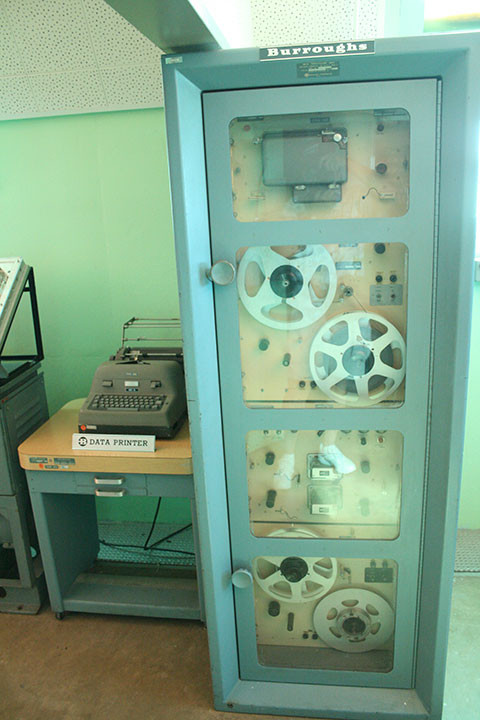
Here it looks like the output could either be printed to the paper tape
or an electric typewriter.
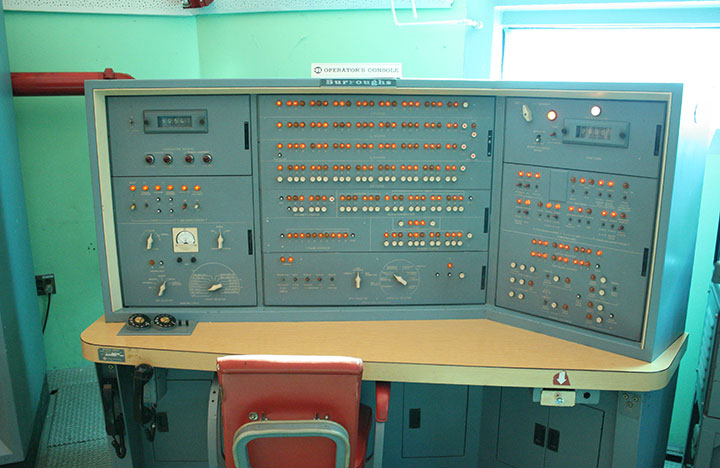
The computer operators console and its blinking lights are very similar
to the ones on Mr. Sulu's console in "Star Trek". But in "Star
Trek" the actors had "flip phone" type hand communicators for
communication similar to today's cell phones while the operator of this
1958 leading edge technology had to rely on old fashioned dial phones.
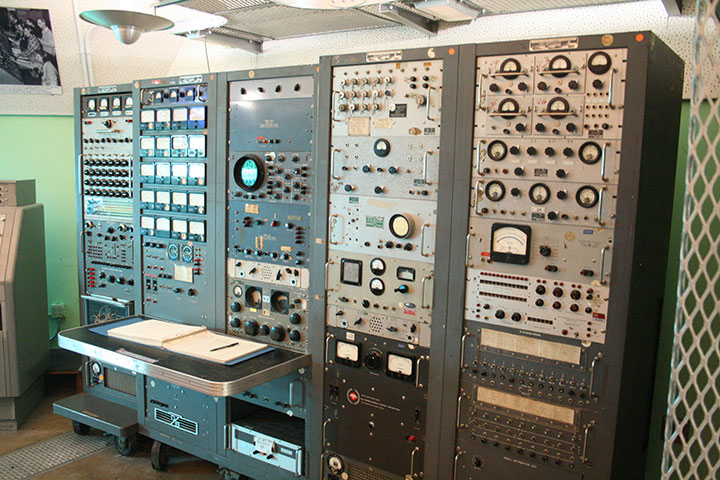
Instrumentation racks for monitoring the missile sitting outside on the
launch pad. Note that there are lots of ten turn potentiometers,
analog gauges, dials power supplies and two small diameter
oscilloscopes.
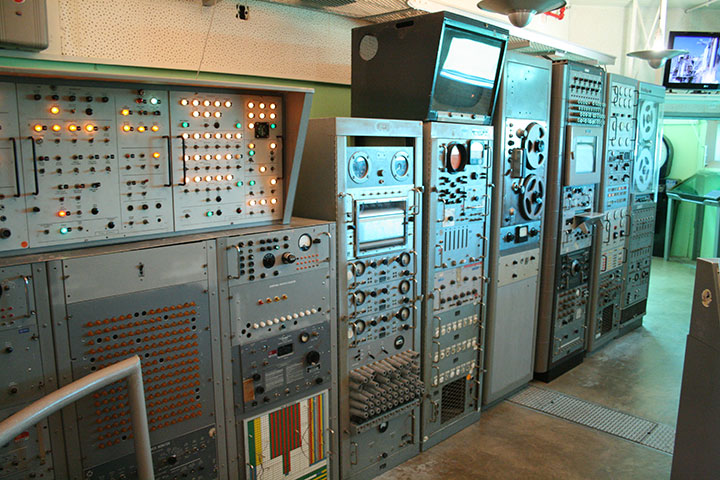
More missile instrumentation.
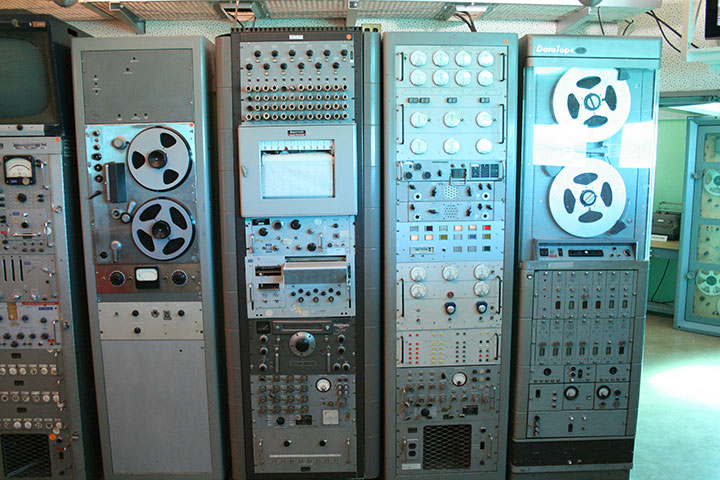
A front on view of the racks.
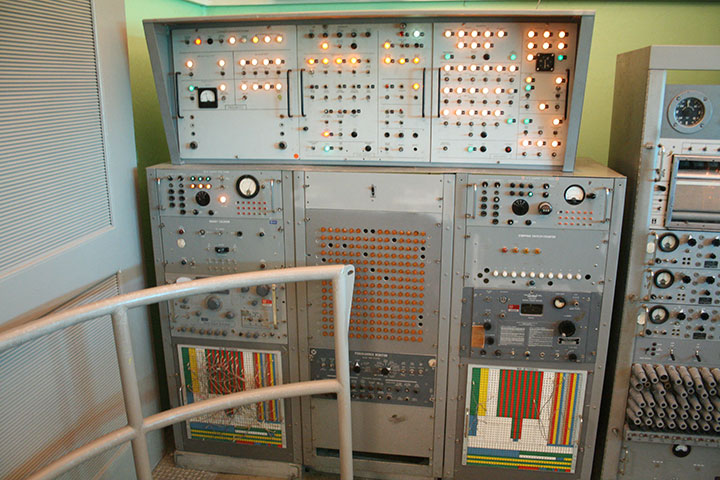
More of the "Star Trek" blinking lights and down at the bottom on the
right and left are two breadboard type programming boards.
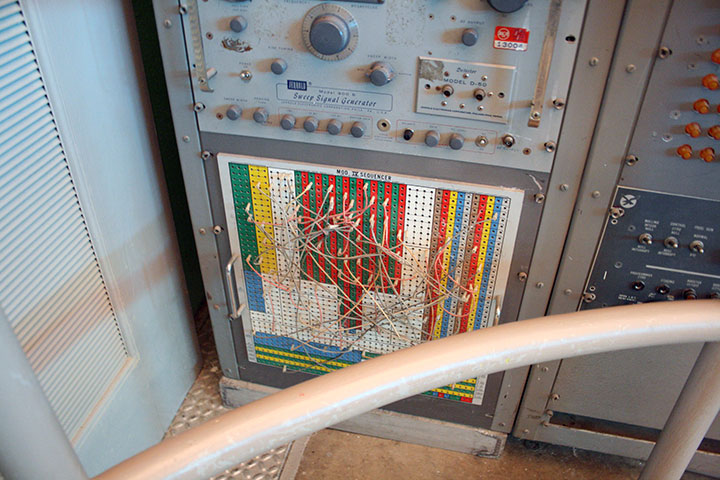
This is labeled as a sequencer. I have to assume changing location
of the wires changed the order in which something happened.
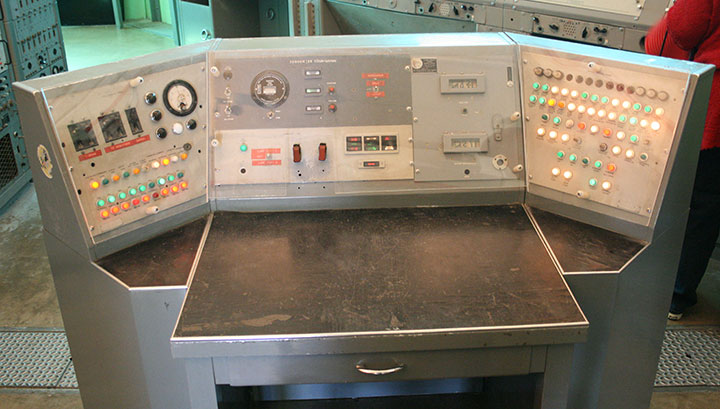
Another control console.
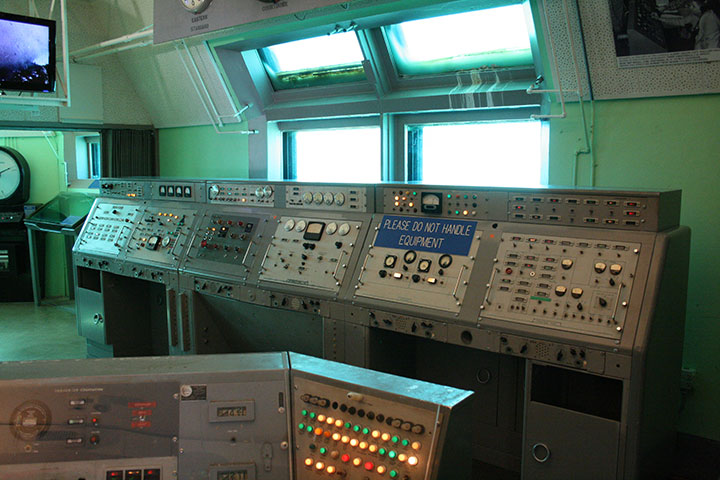
More instrumentation. Note the two sets of windows that allowed
visual observation of the launch pad and launch. The windows are
actually made up of multiple panes of impact resistant glass. If I
remember correctly it is either 19 panes of glass or 19 inches thick as
the number 19 is stuck in my memory from what the tour guide said about
the glass.
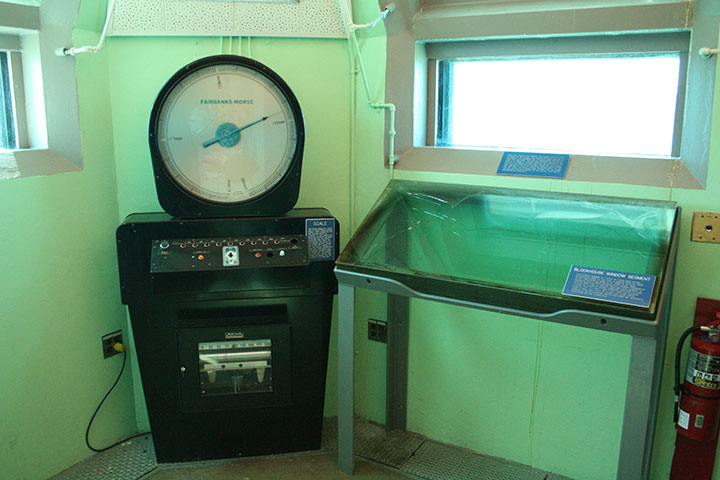
This scale was not for the operators to weigh themselves on unless they
had ballooned up to the size of a missile, as this actually weighed the
missile on the launch pad outside. By determining the weight on
the launch pad the operators could tell when it had enough fuel. Note
the one window.
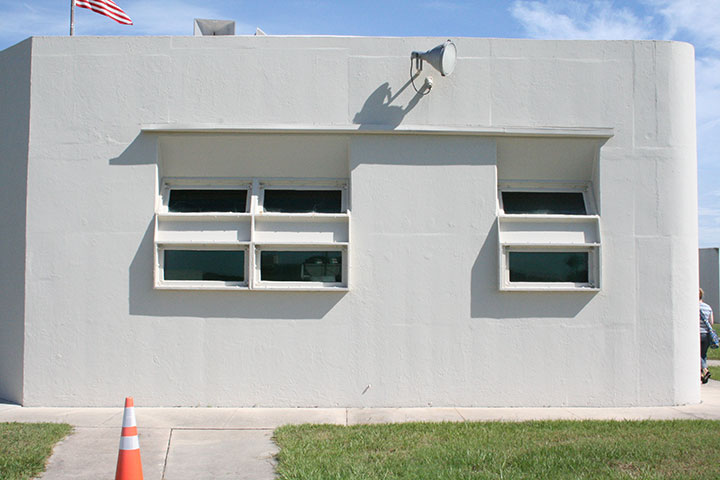
Looking back at the two sets of windows where the instrumentation is and
the one window where the scale is located.
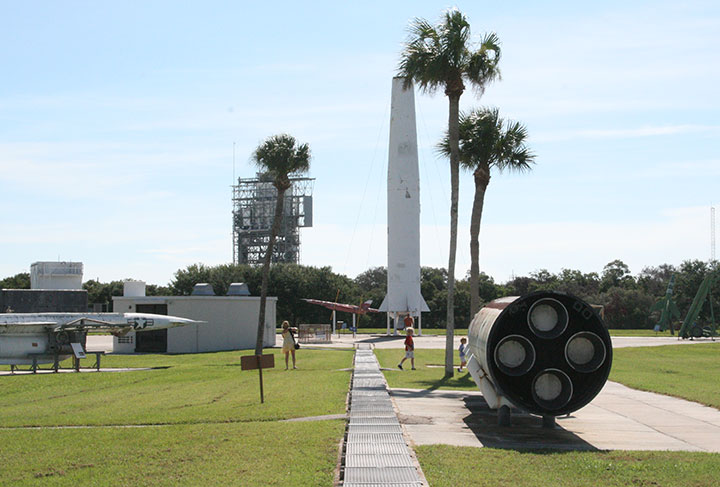
Here I have turned around and and looking at the launch pad. Note
the metal covered concrete channel that goes all of the way out to the
launch pad. This carried all of the wiring that ran back and forth
between the blockhouse and the pad. This was long before the
advanced digital communication protocols that today allows us to send
complex messages down a thin fiber optic cable. This was all
analog communication and required one wire for each bit of information
transferred. In other words, there was a lot of wiring in the
channel.
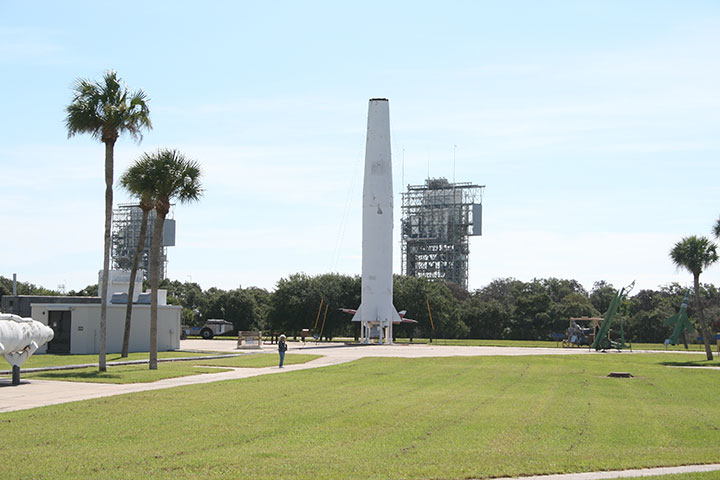
It was from Pad A right here that the United States made a belated entry
into the Space Race on January 31, 1958.
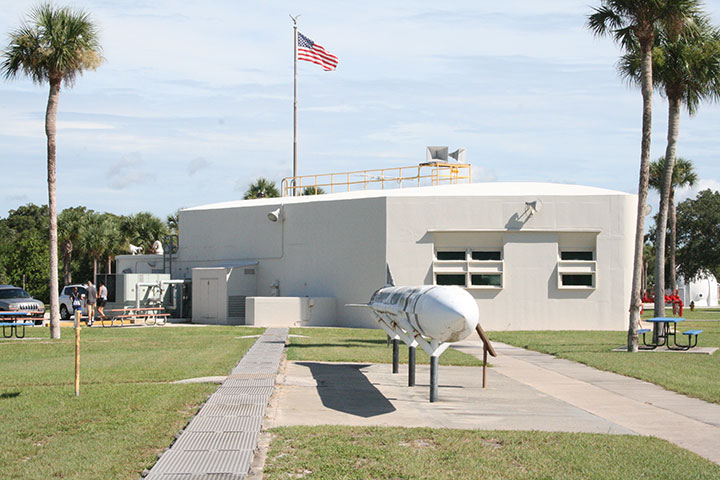
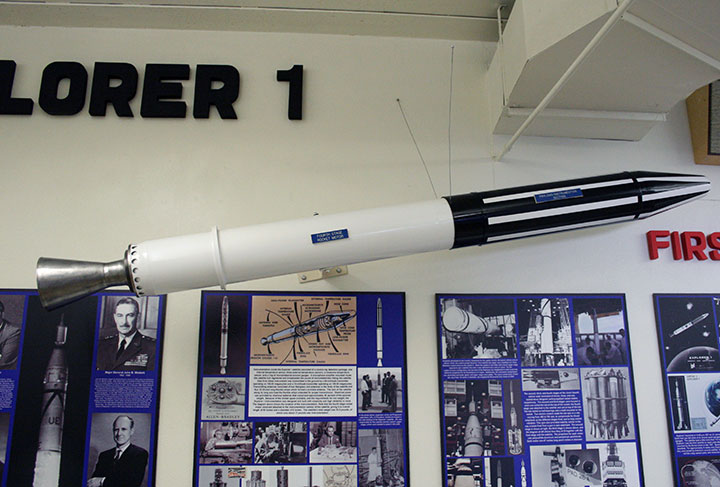
A replica of the Explorer Satellite. Neither it nor the Russian
Sputnik were very large due to the small size of the missiles in 1958.
While Sputnik was a spherical satellite there was no need to orient it
in space. However, with the Explorer being cylindrical in shape it
had to be spinning like a bullet coming out a rifle barrel to stabilize
it in flight. Therefore if you see old films of this launch you
will see it being spun up while on the launch pad previous to being sent
into space.
Plan your trip now:
Air
Force Space and Missile Museum
Bastogne, Belgium
Battleground, IN
Book Depository, Dallas, TX
Cape Canaveral Air
Station, FL
Fallen Timbers, OH Harpers
Ferry, WV Jean
Lafitte's Blacksmith Shop, LA
Jesse Owens Memorial, AL
LBJ
Ranch, TX
Luxembourg American Cemetery
Normandy, France
Oklahoma City National Memorial, OK
Wendover Air Field, UT
Wilbur Wright Birthplace, IN
|




















